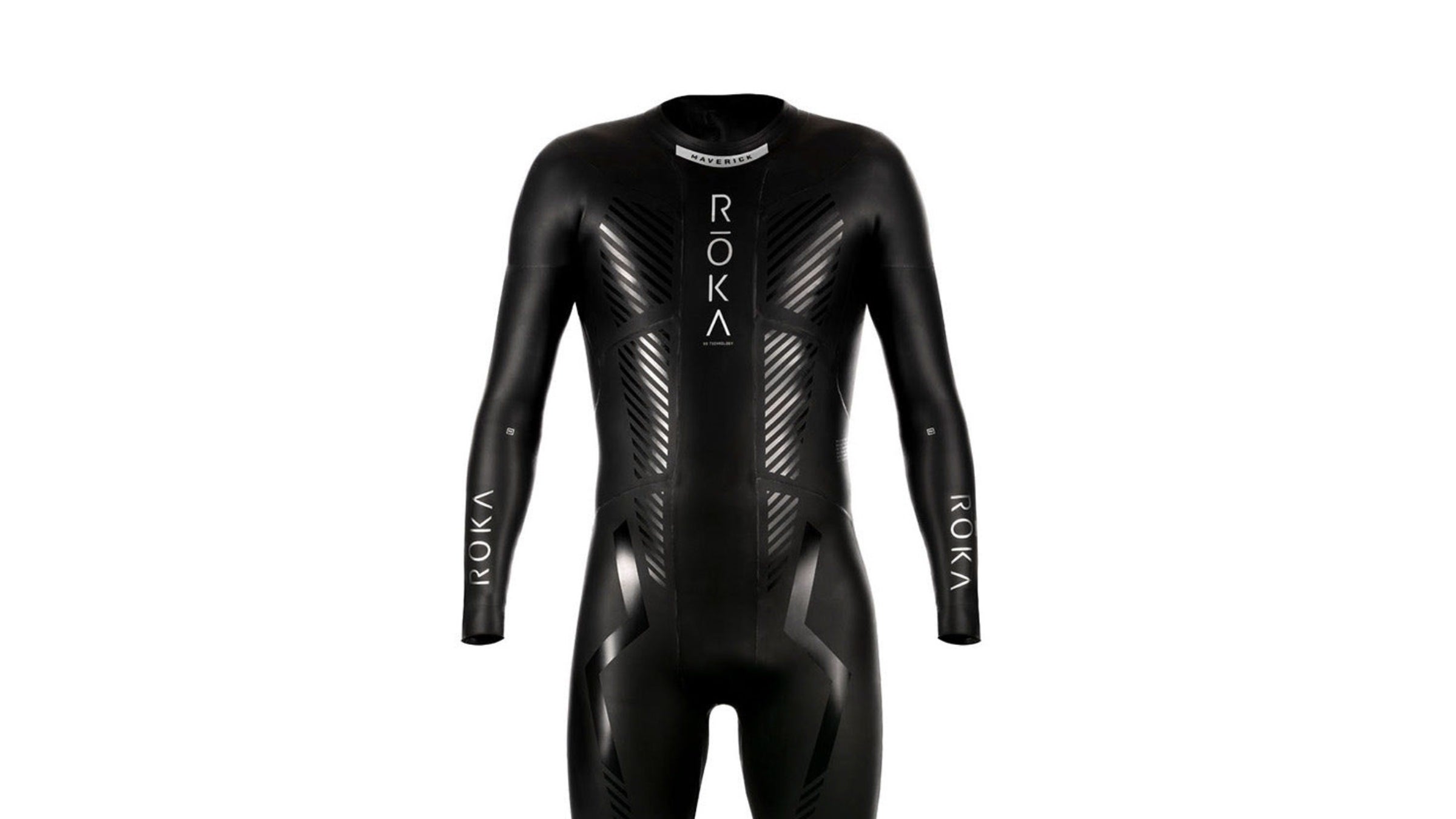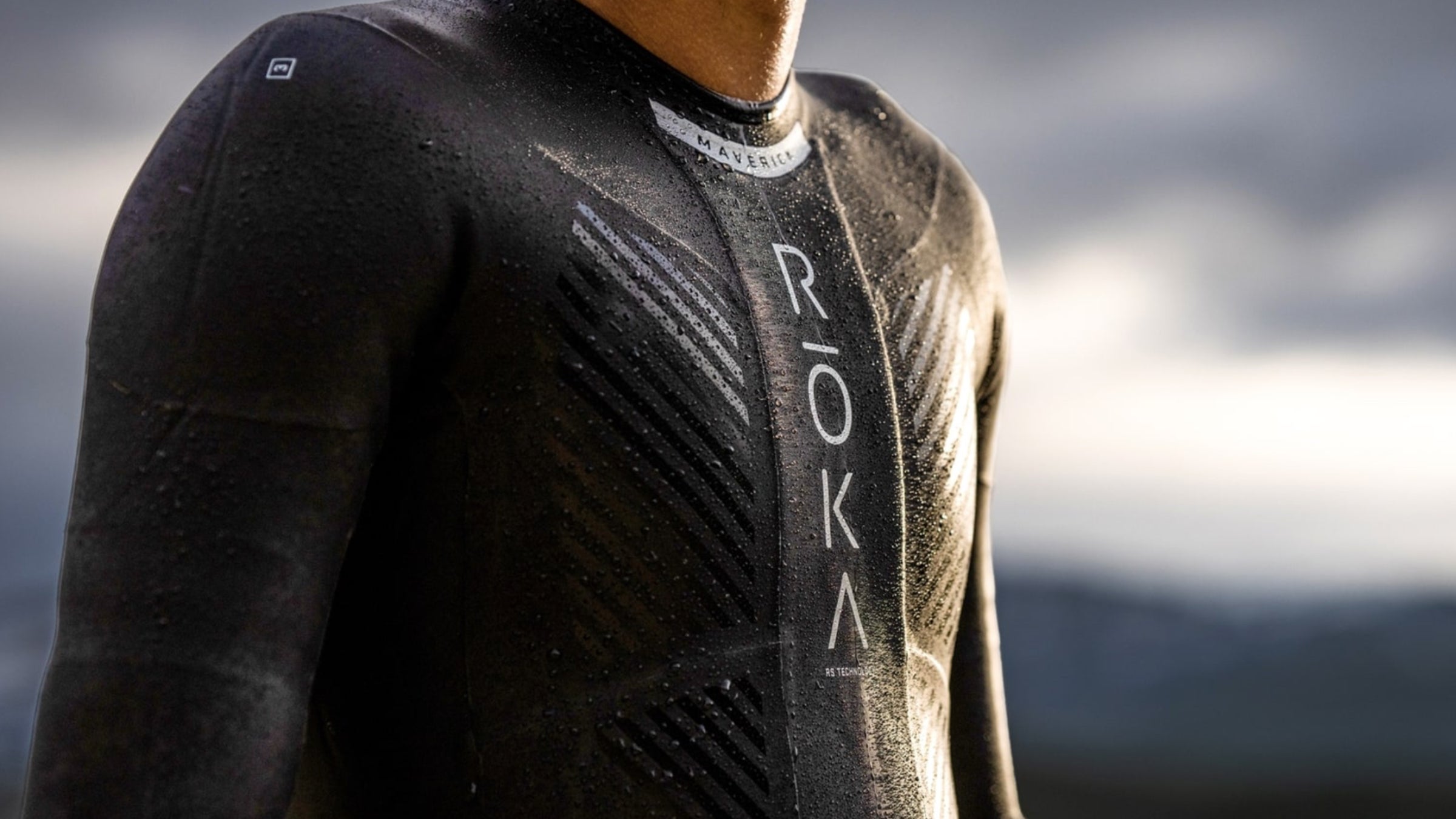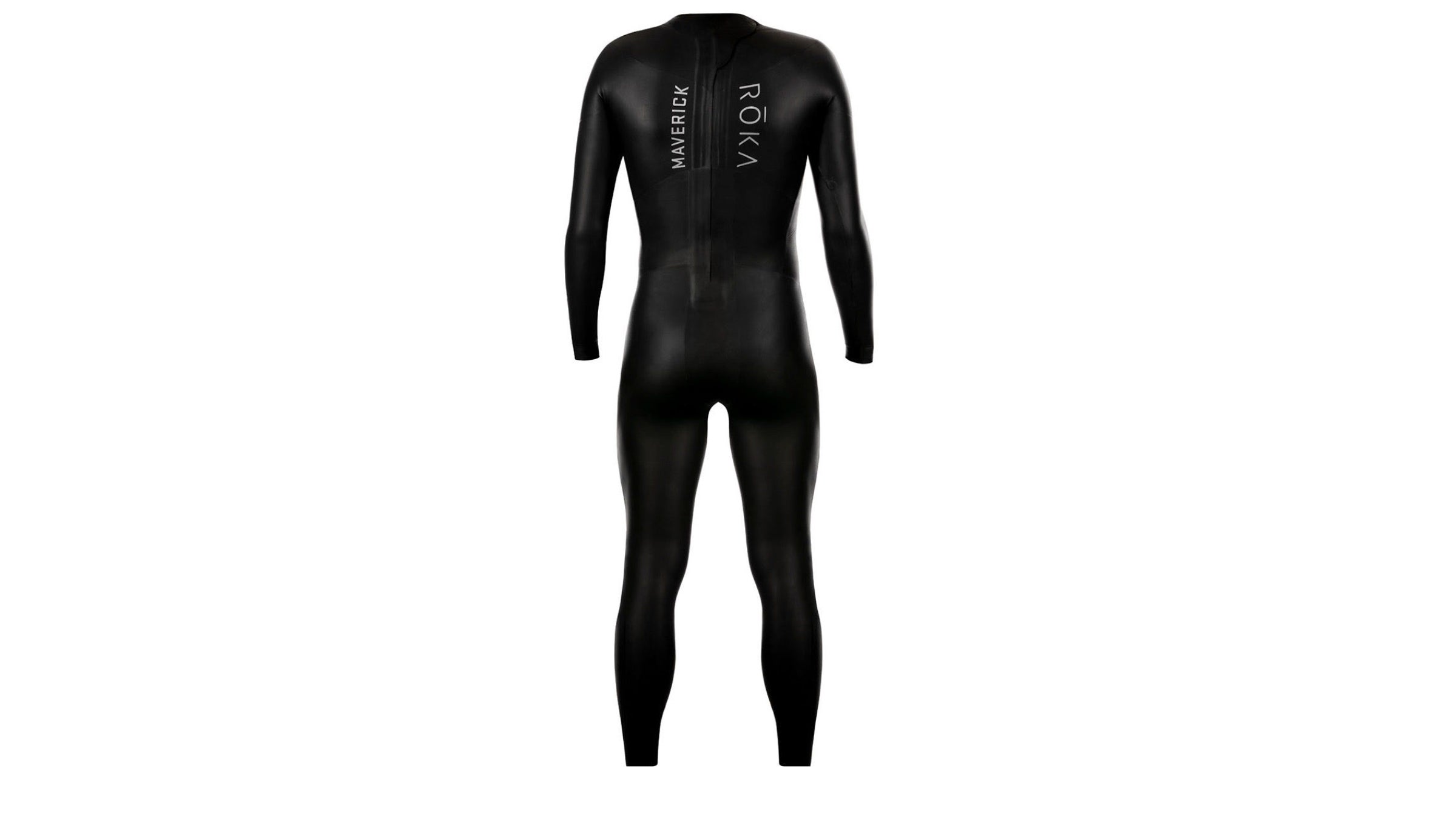New perk! Get after it with local recommendations just for you. Discover nearby events, routes out your door, and hidden gems when you sign up for the Local Running Drop.
If you’re like me, you enjoy nice things. Sure, I like a $10,000 tri bike—who doesn’t? And yes, I’ll wear a $1,000 wetsuit—you don’t even have to put a gun to my head. But there’s something to be said for a piece of tri equipment that you don’t have to baby, to swaddle in bubble wrap when you put it in your car with other people’s bikes; something that you don’t literally need to wear cotton gloves to put on. That piece of tri equipment is more akin to a tool—like a hammer you know you can just toss around, but it’ll work no matter what.
One-thousand-dollar wetsuits are great, and so are $500 ones, but there’s something about a workhorse wetsuit nuder $300 that just makes you want to get out and train without worrying about the length of your fingernails or the availability of a freshwater source for seconds after getting out of the water. And of course there are people who won’t or can’t spend more than $300 on a wetsuit—and this is a lot of us. Enter Roka’s long (long) awaited budget triathlon wetsuit, the Maverick.
Section dividerRoka Maverick Review: The Features
Rather than go through the basics behind Roka’s new Maverick wetsuit—which we covered in our quick review back in September—we’re going to take a deeper look at each of the features in this suit based on our months with it, ranked from most to least important, and go over our impressions of each. Further below, we’ll talk about the goods and bads in this suit overall.
Arms-Up Construction – There are various theories by different wetsuits on how the arms should be attached and patterned onto the suit. Many brands have a standard “arms down” patterning, much like a suit, tailored so the neoprene is bonded as if the model or swimmer was standing with his or her arms down. Huub goes in the middle with their “arms neutral” 90-degree attachment, and—you guessed it—Roka assumes you’ll want your arms up, and attaches its arms in an upwards-assuming position.

The result, at least for this tester, is less pull on the recovery phase of the stroke, when the hand is transitioning from the hip, through the air, and into the water in front of your face. Though one could argue that this “arms-up” position might create tension through the pull phase, it isn’t tangible to me. Why is this so important? As the Maverick is a budget wetsuit that uses less-expensive neoprene (Yamamoto #38) with fewer panels, you need little “tricks” like this to help keep the shoulders from fatiguing. If you can’t use 0.3 mm Yamamoto MarkIII FLEXskin on the shoulders (like on super high-end suits for example), then you’ve got to be creative with your patterning.
Independent Neck Suspension – Much like the “arms-up” construction above, this is a feature that could easily get lost in the alphabet soup of marketing lingo. But I keep it high on the list of important features because whatever they want to call it, it works. Second to shoulder fatigue, the next thing that makes budget wetsuits horrible is the chafing you typically have to endure when you’re unable to use tons of panels of fancy, supple (expensive) neoprene.

While the details on the INS system are decidedly vague, the neckline on the Maverick is hands-down the best on any wetsuit I’ve ever tested under $400 even—far better than I’ve tested under $300. The result is a neckline that doesn’t let in water, but still manages to not bind and choke (a common complaint with tight necklines on budget suits). Most importantly, the lack of seams means no chafing—even when I forgot to put on anti-chafe balm. On most budget suits, a lack of balm is instant pain, but not with the Maverick. Again, if you can’t spend the money on fancy neoprene and fancy bonding processes, then you’ve got to be clever.
Yamamoto #38 Neoprene – This is only an important feature because it’s worth remembering that this is a lower-end wetsuit, no matter how you cut it. Like other sub-$350 wetsuits, if they’re using Yamamoto neoprene (and they don’t all), they’re probably also using #38. It’s not super flexible, but it’s more durable than it’s fancy siblings #39 and #40. Roka is using their years of construction knowhow to make a #38 wetsuit work, but don’t forget there’s nothing that’a particularly a bargain in the Maverick—when it comes to neoprene.
Graduated Buoyancy Profile – This is another feature that’s worth noting because it’s just ok. Many entry-level suits are made knowing that they’ll be worn by beginners—and beginners typically need a lot more buoyancy than more experienced swimmers. As such, you’ll find some entry-level suits with as much as 5mm of neoprene (the maximum allowed) in the legs or in the core. The Maverick only uses 1mm, 2mm, and 4mm rubber in their “graduated buoyancy profile.” Roka likely has its reasons, but I’d love to see a little more floatation in this suit, as it’s quite obviously not a super buoyant wetsuit when you swim in it.
Smoothskin Coating, Quick Release Ankle – Both of these features are lumped together simply because they exist, but they don’t create a notable experience while swimming in the Maverick. Roka says its hydrophobic coating makes the suit faster, and I can’t attest to that, but it also says the coating makes the suit more durable—which I can definitely attest to. Though most of the durability could be due to the type of Yamamoto rubber used (from above), but this is a very durable wetsuit.

Also, the ankles are fairly quick to get out of, but not quicker than most suits. That said, the fact that the neoprene panels in the legs are taped does mean that you can shorten the legs—a common practice—without destroying the suit and causing unraveled threads
RELATED: What Matters (and What Really Doesn’t) When Buying a Wetsuit
Section dividerRoka Maverick Review: What We Liked
There’s a lot to like in this suit, and while we covered most of it in the feature break down above, it’s worth noting what was positive about the suit overall. First, the price is totally appropriate for this suit—if not a bit of a bargain when you actually put it on and feel the suit. While on paper, $275 is just about right for a Yamamoto #38 rubber suit, the construction methods have pushed this into something that feels more like a $400 suit. This is called “trickle-down features,” and you’ll see it in other areas of the tri market, like the Cervelo P-Series tri bike—a rig that runs around $4,500, but borows tech from its $9,000+ big brother, the P5. This is a win for consumers when brands use their molds, tech, R&D, and processes from luxury items to help make a better budget item. Here you see that in the Maverick with its arms-up design and its neckline.
It also amost goes without saying that we like the fact that Roka is making an effort to reach out to newer triathletes. While it’s not exactly a feature, in a time where bike brands, and even some neoprene brands (Orca, for instance) are trimming their product lines to only make and sell premium products, I’m encouraged to see that Roka is interested in bringing new people into the sport with some (finally) approachable prices. If we don’t encourage new triathletes by producing and promoting affordable gear, triathlon will always just be a small club of exclusively rich people. Roka is literally putting its money where its mouth is, and is cashing in on years of expensive R&D to pay it forward with a budget suit.
Finally, even if you’re not a brand-new triathlete, the Maverick fills a big need for triathletes who spend copious amounts of time (or should be spending copious amounts of time) in the open water training. Yes, a $600+ wetsuit is awesome, but it’s not so awesome if you’re swimming in it two or more times per week, as that flexy, supple rubber will come apart much faster than a suit like the Maverick. Save that great suit for race day and get your hands on a utility suit as soon as you can. For Roka fans, this has never been an option (unless you’re fortunate enough to consider the Maverick Comp II a budget suit), until now. Now you can get the same size and patterning as your awesome Maverick X2, for almost 1/4th of the price, and it won’t get wrecked baking in your car between sessions.
Section dividerRoka Maverick Review: What Would Have Been Better
For under $300, you can’t really complain about a lot, except for chafing and stiff, inflexible shoulders—and the Maverick already knocked those out of the park. You won’t find a suit with 0.3mm neoprene or Yamamoto #40 rubber for under $400 (or for even under $500 typically), so most other complaints are almost inappropriate.
However, the one place I would have liked to see Roka step up a bit more would be sizings. First, to put it out there, Roka actually leads when it comes to size runs compared to 99% of other wetsuit brands. Ten sizes for men and ten for women in the Maverick still beats most of their competitors, but I think it would have been a game changer for Roka to lead with something like 15 of each. More sizes—especially at the beginner-level suit—means more people feel welcome into the sport. And while that’s not necessarily Roka’s job, it would be a great way to lead by mission. That said, Roka also boasts hands-down the best return policy, with a 30-day window—used. Most brands require the suit to be unused, and the only other brand that I can think of to do a used return is 14 days (Quintana Roo). While one could argue this negates the need for more sizes, I would still say that more sizes would be more welcoming for more body types. Roka’s already halfway there, they might as well go all in (especially as you see their suits selling out in size runs left and right).
Conclusions
There are super expensive wetsuits that I love wearing for different reasons, but I still love to have a suit I can beat up, not rinse off right away, drag along the asphalt, and not worry about it. I know I open-water swim more when there’s less prep involved, so the Maverick is my “leave-in-the-car” suit that gets me out in the water on days when I wasn’t necessarily planning on hitting the ocean.
Typically a “workhorse” suit also means you’ll be dealing with chafing if you don’t put on balm, or that your shoulders will be fatigued after the session. No one likes either of those things. The Maverick is so impressive because by using years of premium knowledge, Roka was able to apply its “learnings” to something that doesn’t cost an arm and a leg. Not only is that good news for the experienced triathlete in the market for a new suit or a training suit, but it also has the side effect of promoting the sport.
If Roka could expand its sizings and maybe target new or not-yet-triathletes, I think the Maverick wetsuit could serve as an ambassador of sorts. How many new triathletes wear surf wetsuits or old borrowed wetsuits for their first tri, only to wake up the next morning looking like they were in a fight with a handsy strangler. Sometimes triathletes don’t come back after a bad experience—especially one in the water, where new triathletes are often the most tenuous. It’s a good signal when a comfortable, durable, and affordable entry-level wetsuit finally becomes available from a brand that was previously only known for premium products. Save your new-triathlete friend some trauma and point them to the new Roka Maverick.
RELATED: The Best Triathlon Wetsuits
